|
| Mongolian |
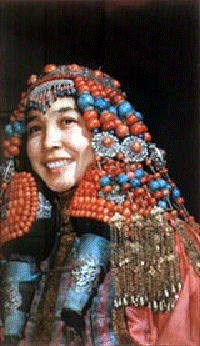 |
Population
Location
Religion
Major languages
|
5 million
Inner Mongolia and Heilongjiang
Tibetian Buddhsm, Muslims
Mongolian |
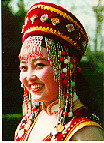 |
Mongolian led by Genghis Khan governed China and established Yuan Dynasty from 1846-1890. They have their own languages and three dialects.
Inner Mongolia is now an Autonomous Region in China.They are mostly practitioners of Tibetian Buddhism and Muslims.
|
| Hui |
 |
Population
Location
Religion
Major languages |
8,130,000
NORTHWESTERN
MUSLIM
Chinese |
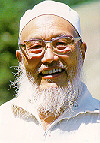 |
| |
|
The Hui have a long history of intermarriage with other nationalities such as Arabs, Han Chinese, etc. They follow many Muslim rules and taboos, such as not eating any pork. The men wear white or black skullcaps. Women cover themselves with white, black or green veils.
|
|
 |
| Tibetan |
 |
Population
Location
Religion
Major languages |
4.6 million
TibetĦ˘Qinghai
Tibetan Buddhism
Tibeten |
 |
| |
|
Tibetans and Han Chinese have been living together for thousand of years. China' sovereignty over Tibet can be traced back to 13th Century.
Before becoming an Autonomous Region in China, Tibet was under a feudal serfdom characterized by the dictatorship of upper-class monks and nobles. The feudal lords who constituted only five percent of the population possessed 95 percent of the means of production. Tibet serfs were even more miserable than the black slaves in the United States before the civil war. Tibet was at that time not peaceful at all because the struggles between the slaves and their lords were very fierce. There were no other religions allowed in Tibet. There were evidences that missioners were killed in Tibet in the past.
Tibet is now an Autonomous Region in China. Tibetans enjoy the same freedom of religions, education and other rights as other Chinese.
|
 |
| Weiwuer |
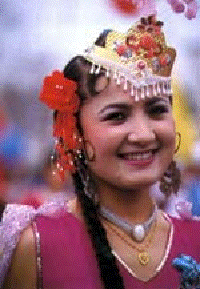 |
Population
Location
Religion
Major languages |
7.2 million
Xinjiang
Muslims
Weiwuer |
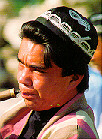 |
Xinjiang is a Uygur Autonomous Region. It is the largest region in China, covering one sixth of China's total. A great deal of it is desert and mountain. Weiwuer love dancing, singing and playing their own unique musical instruments. They are hospitable people. Visitors will be invited to taste sweet grapes, melons and plums, drink tea, and join the lively dancing.
|
 |
| Miao |
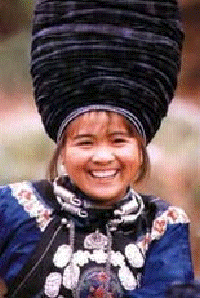 |
Population
Location
Major languages
|
7.4 million
Sichuan, Hunan,Guizhou and Yunnan
Miao language
|
 |
Chinese historical records show that the Miao ethnic group used to live along the Yellow river, much earlier than any other ethnic group in China. Because of wars, and changes in the living environment, the Miao gradually established many tribes when they moved further south. These tribes have different lifestyles and different types of costume developed during cultural exchanges with other nationalities, while maintaining their own. There are 23 varieties of costume, falling into five types more prevalent in western Hunan Province, southeastern Guizhou, in the region where Sichuan, Guizhou and Yunnan provinces meet, and the Hainan Province. Among the five types, the popular styles in western Hunan Province, and eastern and southeastern Guizhou Province are typical and more distinguishable.
|
 |
| Yi |
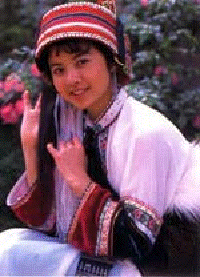 |
Population
Location
Major languages
|
6.6 million
Yunnan, Sichuan, Guizhou and Gunangxi
Yi language
|
 |
Yi settles down in the valley surrounded by mountains and streams. Yi has a beautiful language, which is still being used today. There are many history records, literature, medication study all written in Yi language. Yi lives on farming and animal husbandry. Their traditional painting, sculpture and silversmith are beautiful. Fire Festival in June is a big day for Yi. Just like other minority groups, they are good in folk dancing and singing.
|
 |
| Zhuang |
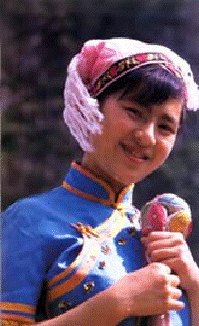 |
Population
Location
Major languages
|
15 million
Mainly in Guangxi, some in Guangdong, Guizhou, Yunnan and Hunan.
Zhuang language
|
 |
Zhuang is the largest ethnic minority group in China. They settle in the Guangxi Autonomous Region and live on farming. Their tropical fruit and farming product are very famous. They have own language. Based on Han Chinese, They also created a written language, which is still being used widely today. Every March, they have a big festival to celebrate with folk dancing and singing.
|
| Buyi |
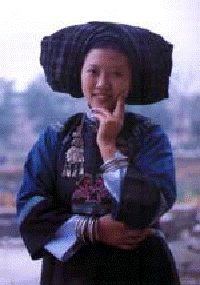 |
Population
Location
Major languages
|
2.5 million
Guizhou, Yunnan, Sichuan and Guangxi
Buyi language |
 |
Buyi is the native ethnic group living in the highland, traced back to the Stone Age. They are mainly in farming and forest product. Has own language but not widely used. Their ancient architecture becomes hot spot for tourist. Their stone house is very unique and built based on the "Ying Yang" theory.
|

| Korean |
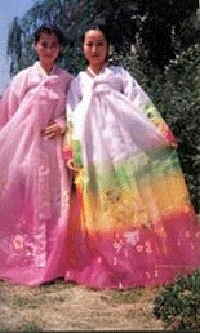 |
Population
Location
Major languages
|
2 million
Jilin, Heilongjiang, Liaoning,Inner Mongolia
Korean
|
 |
Korean moved into China 300 years ago. They mainly live on farming. They brought with them their own language and traditions. Just like other Chinese, they respect elders and love their children. They have very good education system and achieve high level of education. They excel in the area of science and art.
|
| Man (Manchu) |
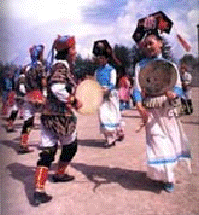 |
Population
Location
Major languages
|
9.8 million
Liaoning, Jilin, Heilongjiang, Hebei
Chinese
|
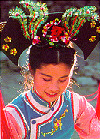 |
Korean moved into China 300 years ago. They mainly live on farming. They brought with them their own language and traditions. Just like other Chinese, they respect elders and love their children. They have very good education system and achieve high level of education. They excel in the area of science and art.
|
| Dong |
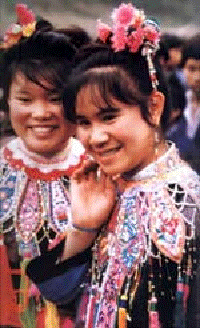 |
Population
Location
Major languages
|
2.5 million
Guizhou, Guangxi, Hunan
Tong language
|
 |
Dong lives on farming and fishing. They have own languages and know Han Chinese well. They have rich heritages in arts and music. Their poetry is very famous. The most amazing architecture is the drum tower, which was built thousand years ago, without using any nails or slots
|
| Yao |
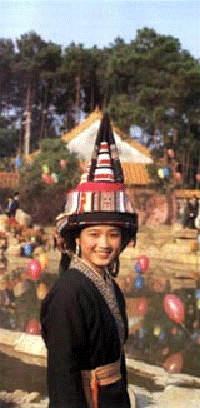 |
Population
Location
Major languages
|
2.1 million
Guangxi,Hunan, Yunnan, Guangdong, Guizhou
Yao language
|
 |
Yao originated in Yangtz River and later moved south into the mountain area in the Southern West of China. They have own language but most of them know a few other languages. In the remote area, some of them still keep own religion and traditions, and very primitive living condition by hunting and farming. They are good in dancing and music.
|
| Bai |
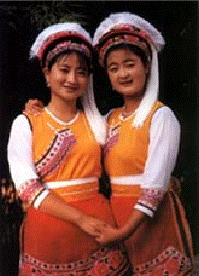 |
Population
Location
Major languages
|
1.6 million
Mostly in Yunnan, Guizhou, Hunan, Sichuan
Bai language
|
 |
Bai is a very old ethnic group in China. Dali of Yunnan is their capital. They are very good in science, architecture, medication and literature. They live mainly on farming and fishing. They have own language but also know Han Chinese very well. Dali is now a hot tourist area for its famous architecture, temples, sculpture, visual arts, etc
|
| Tujia |
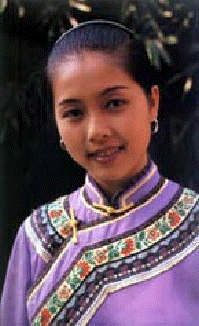 |
Population
Location
Major languages
|
5.7 million
Hunan, Hubei, Sichuan, Guizhou
Tujia language
|
 |
Tujia's history can be traced back 2,000 years ago. They have been living in Hunan and the neighboring provinces for years. They have own languages. They have mixed with other minorities and Han since early days. Most of them know a few languages, including Han Chinese. They have no specific religion and worship "White Tiger" as their ancestor.
|
| Hani |
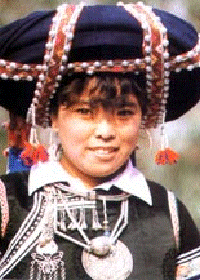 |
Population
Location
Major languages
|
1.25 million
Yunnan
Hani language
|
 |
Hani lives on farming, usually 800 to 2500 above sea, high into the mountain area. They are very good in creating farming field on the slop of hills with unique watering system. They have own language but have no specific religion. They do worship nature and ancestors. Their New Year starts on October.
|
| Kazakh(Hasake) |
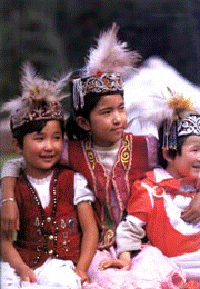 |
Population
Location
Major languages
|
1.1 million
Xinjiang
Hasake language
|
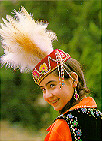 |
Kazakh settles in the north of Xinjiang. They live on animal husbandry and farming. They have own language and believe in Islam. Their beautiful song and dancing are famous in China.
|
| Dai |
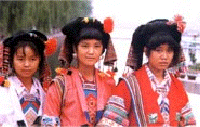 |
Population
Location
Major languages
|
1 million
Yunnan
Dai language
|
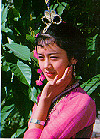 |
Dai is one of the largest minority groups in Yunnan. Their own language is very closed to India. All the history and literature were recorded in Dai. They live on farming and have many tropical plants. Their new year starts in June.
|
|
| Li |
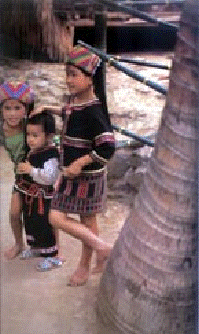 |
Population
Location
Major languages
|
1.11 million
Hainan
Li language
|
 |
Li is the native in Hainan and can be traced back to "Stone Age". They live in farming and have the earliest weaving technology in Chinese history. The technology was then transferred to mainland China in Tang/Song Dynasties. Li has no written language and use Han Chinese.
|
| Lisu |
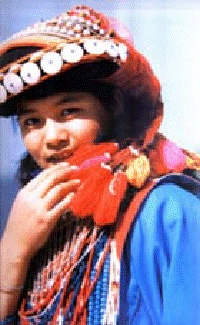 |
Population
Location
Major languages
|
575,000
Yunnan
Lisu language
|
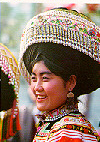 |
Lisu migrated into this area since 8th Century. They live on hunting, forest product and mineral. They have own language and wear traditional cloth. Lisu is a very open and friendly
|
| Wa |
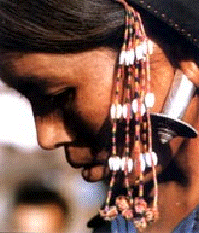 |
Population
Location
Major languages
|
352,000
Yunnan
Wai language
|
 |
Wa has settled in this area for a few thousand years. They live on farming and hunting. There are many forest products and animals such as tiger, bear, deer and elephant. Their language is closed to the languages used in Burma and other neighboring countries.
|
| She |
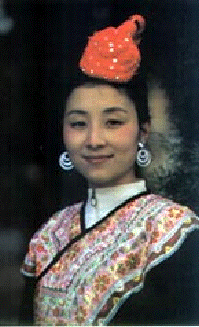 |
Population
Location
Major languages
|
630,000
Fujian, Zhejiang
Chinese
|
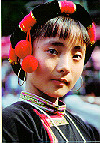 |
Since the years, 'She' has spread into several provinces along the east coast. They live on farming. They have own language but use Han Chinese. They are very artistic and use bamboo to make furniture, decoration and many other products.
|
| Gaoshan |
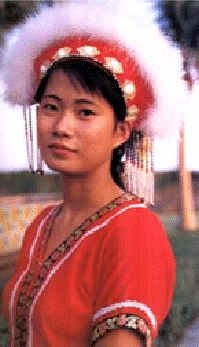 |
Population
Location
Major languages
|
400,000
Fujian, Taiwan
Gaoshan language
|
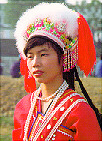 |
Gaoshan settles in Taiwan mountain areas for centuries. Some of them migrated to the east coast of mainland China. They have 15 languages, some of them are closed to the languages used in Indonesia. They live on farming. Gaoshan people are organized into commune and every one in the commune has clear responsibility.
|
| Lahu |
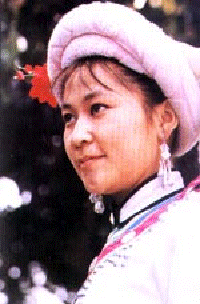 |
Population
Location
Major languages
|
415,000
Yunnan
Lahu language
|
 |
Lahu settles in the tropical mountain area. They live on farming and forest industry. They have own language but most of them use Han Chinese and Dai language. Their written language was greatly influenced by the missionary from the West in late 19th Century. They like dancing and music. Girls favor dark color cloth as traditional fashion.
|
| Shui |
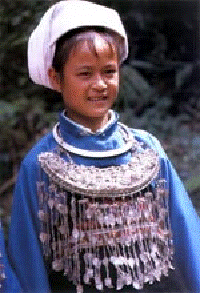 |
Population
Location
Major languages
|
346,000
Guizhou
Shui language
|
 |
Shui is a native in Guizhou. They live mainly on farming. They have an old language with 400 words and only used for religion activities. They also have own calendar. September is the starting of a new year. They are very good in painting and have a 700 years old history of diet technology.
|
| Dongxiang |
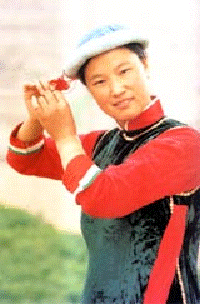 |
Population
Location
Major languages
|
374,000
Gangsu, Qinghai, Ningxia
Dongxiang language
|
 |
Dongxiang has same language as Mongolia. They are Islam in religion and maintain all the Islam traditions. They are a very open nation and like dancing, singing and other activities. They live on farming. Most of them use Han Chinese
|
| Naxi |
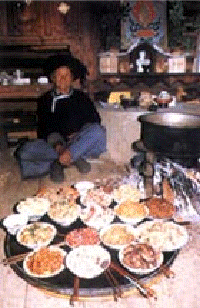 |
Population
Location
Major languages
|
278,000
Yunnan
Naxi language
|
 |
Naxi migrated from Qing Hai to Yunnan long time ago. They live on farming and forest industry. The forest there is unspoiled and can be a good place for adventure. There are few thousand of different types of flowers, flora and plants. They have own language but often use Han Chinese
|
| Jingpo |
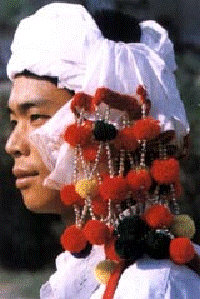 |
Population
Location
Major languages
|
119,000
Yunnan
Jingpo language
|
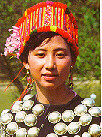 |
Jingpo settles in high mountains. They live on farming and forest. Their products include red wood, rubber, coffee, tea and many other tropical products. They have five dialects and they mixed in using these dialects in different situations.
|
| Haergehe (Khalkh) |
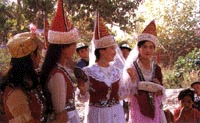 |
Population
Location
Major languages
|
140,000
Xinjiang
Keerkezi language
|
 |
Khalkh migrated from Mongol. They mixed with Uighur and Kazakh. They have own language but also know Uighur , Kazakh and Han Chinese. They are Islam and live on farming and animal husbandry. Their literature is very famous and like dancing and music.
|
|
|